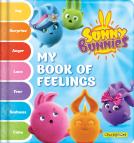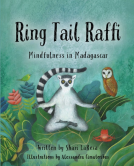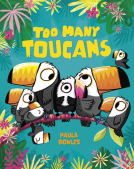
Justice
A Tale of the Nepali Civil War (The Graphic Novel Book #1)
by Ram Khatri
This title was previously available on NetGalley and is now archived.
Send NetGalley books directly to your Kindle or Kindle app
1
To read on a Kindle or Kindle app, please add kindle@netgalley.com as an approved email address to receive files in your Amazon account. Click here for step-by-step instructions.
2
Also find your Kindle email address within your Amazon account, and enter it here.
Pub Date Apr 15 2023 | Archive Date Jun 15 2023
Talking about this book? Use #justicegraphicnovel #NetGalley. More hashtag tips!
Description
In this heartwarming story of family connection, recollection, and survival, the author has revived the memories of the people affected by the Maoist-government war through the displaced to the working farmers.
“. . . tense and heartfelt . . . shadows gathering over a sunny childhood.”―BookLife Review
“It was a simple life; a peaceful life,” narrator Tara muses in Ram Khatri’s pained, humane graphic novel. “At least that’s what I thought in my childhood innocence.” Justice chronicles, from young Tara’s perspective, the end of that innocence, which comes to her Nepali family farm in the form of war. First, in the early 2000s, her nation is torn between Maoist revolutionaries and government forces, with her father increasingly pressured to take a side. As neighbors turn on each other, and young people are hauled away to fight, Tara’s parents attempt to persevere without involving themselves. But soon soldiers are searching their home as the children hide in the barn, and when the worst happens Tara blames herself.
Justice is the story of a young girl’s brave journey to reclaim the life she left behind during the unforgiving conflict of the Nepali Civil War. In the story, the girl learns the truth about the life that she left behind.
A Note From the Publisher
www.justicegraphicnovel.com
For more information-
www.justicegraphicnovel.com
Advance Praise
"A touching graphic novel about a simple family caught up in a civil war. . ." ―Kirkus Review
"Khatri's poignant graphic novel brings to life, vividly, the journey of a young woman to reclaim the traumatic landscape of her past." ―Samrat Upadhyay, Author of Arresting God in Kathmandu
"An exploration of an exotic land (to Americans, anyway) with all too familiar human challenges . . ." —Paul Levitz, American Graphic Novel Writer, Editor, and Former President of DC Comics
". . .an artistic character-driven way to learn about the recent history of the Nepali civil war." ―Tucker Lieberman, Independent Book Review
". . .provides the vivid story about everyday struggles to the villagers during the so-called People's War." —Subodh Raj Pyakurel, Human Rights Activist & Chairperson of INSEC, Nepal
"It's a story of Tara who returns to her abandoned home in her remote village and confronts the trauma and suffering caused by the protracted conflict—known as 'The People's War'—that altered the lives of countless families forever."—The Himalayan Times
Average rating from 13 members
Featured Reviews
The novel book 1 Justice, A Tale of the Nepali Civil War by Ram Khatri is a mesmerizing story of a family living in a beautiful Nepali village. The story is narrated through Tara, who takes the reader on a journey through her heart and her memories. Her feelings for her beautiful village, peaceful and simple life and her love for the family are heartfelt.
The graphical representation of the story by Sandipan Santra keeps the reader engaged from the beginning to the end. The representation is beautiful and simple. Like you are going through a reel of Tara’s memory. Language is very approachable and easily conveys the feelings of the narrator. The simple representation makes the reader appreciate the rural life of Nepal. The narration is powerful. It revolves around Tara's family’s daily life and chores.
How Nepal’s civil war affects Tara’s simple family life leaves the reader speechless. Kamal’s threats to the family and her brother Sudeep being gone take the reader to a level of serious thought over political issues that affect the people of a country.
All in all, Justice, A Tale of the Nepali Civil War is a gripping story. It shatters the feelings of the reader in the end. Sudeep’s disappearance leaves a series of questions in one’s mind. What will happen next? Will Tara and her family ever see Sudeep again? Is he being abducted by the Maoist fighters? And so on and so forth. It raises the curiosity of the reader to continue reading.
The novel is recommended for the audience with an understanding of the effects of the civil war in Nepal. Ram brilliantly highlighted the suffering caused by the civil war for an innocent family. I highly appreciate Ram Khatri for bringing up a thoughtful subject to the reader’s attention.
 Irina R, Reviewer
Irina R, Reviewer
First of all, i want to say thank you to the author, Ram Khatri for giving me the opportunity to read and review this heartfelt story.
The story is about Tara and how the Nepali civil war gravely affected her family. The story begin in a fast forward to 4 years after the war started where Tara finally made a solo journey back to her old house where she reminisced on how happy and peaceful their lives were before the war with the scenic and lush countryside,tending to farm animals and doing their house chores together. In a spur of a moment,her happy thoughts was short lived when she recalled back on the fateful day where problem arises when the Maoists started coming to her house and disturbing her family lives.
This is an eye-opening story,illustrated beautifully by two illustrators who both did a great job in highlighting the impact of the war on the ordinary people/the civilians. The graphic novel however came with two distinctive illustrations both focusing on the same storyline. The first illustrations appear in colour while the second illustrations appear in black and white.
In my humble opinion, i think it would be even more interesting if the black and white illustrations were to be used to show after the war happened,highlighting on how greatly it impacted on the family,intensifying on how dark and bleak life has become to the family,with their home destroyed and a family member being abducted by the Maoist armies. And then the other colourful illustrations be used for portraying the before the war scenes on the happy times the family had together, tending to the farm work and doing the house chores, eating and playing together,etc.
As someone who isn't familiar with the Nepali civil war, i was hoping to find some more coverage or background information on how the war actually started and who are the perpetrators which to me is insufficiently covered in the story as the details given is too brief and everything happened too quickly. and too briefly.
Overall, kudos to the author for his great effort in highlighting about the Nepali civil war through this simple yet eye-opening short story. I am looking forward to see where the story goes next and what would happen to Tara and her family? Do they get to seek for justice and redemptions over their losses?. Hopefully book no. 2 would justify the things left unanswered in book no.1.
This book has one peculiarity and this is that it is illustrated by two people, Sandipan Santra drew the first 44 pages and Ingrid Lilamani the last 44.
Personally, I liked more the illustrated by Ingrid, it made me feel all Tara emotions: guilt, sadness, pain, the lost of her childhood. Although sometimes I felt there was a lot of white, maybe if some shadows are added it would help.
Lately I am reading a lot about Asia and I am impressed by how several countries have suffered horrible wars. I wasn't taught any of that in school (I'm from latam). It is as if Asia doesn't matter, as if it happened in Asia then it was not as shocking as if it happened in Europe.
That is why I think it is important that these types of stories are created, published and read. Although they may not explain to us at length how the civil war in Nepal was from beginning to end, it gives us the step to start our investigation or the necessary information to keep in mind that something, since 1996, was happening in this country and that changed many families.
Justice is narrated by the present Tara, who returns to her childhood home. Upon arrival she is flooded with memories of those days where all the things that would separate her family begin to happen.
We have a portrait of a poor but happy family of farmers, whose happiness is disturbed by Maoist supporters. With each visit the tension on the farm grows until one day something heartbreaking happens and Tara feels guilty.
I feel that more context of the war is needed, such as why it started. but it is understandable because Tara narrates it while talking about her memories as a child, and a girl would not know extensively about politics.
With that ending, I am waiting patiently the book 2, to find out what happens with Tara's family and where this whole situation will lead.
Justice: A Tale of the Nepali Civil War
The Graphic Novel Part 1
By Ram Khatri
In all honesty, I don’t know much about the country of Nepal. When I saw this book I thought it would be a great opportunity to learn more about their history. This graphic novel follows the story of Tara and her family members as they deal with Maoist rebels during the beginning of the Nepali Civil War. The rebels would come by their home telling them to stop growing their crops and trying to recruit Tara’s older brother. The story ends with Tara’s brother going missing when some “friends” show up to talk to him. I look forward to reading Part 2 as I want to know more about what happened to the family and more about the civil war in general.
An interesting note about this graphic novel is that it has two illustrators. I thought that meant that part of the story would be in one style and another part of the story would be in another style. Instead both illustrators illustrated the entire story in their own style. You can essentially choose to read this book in color or in black and white. I liked both styles, but did enjoy the colorful version more.
I would like to thank NetGalley, Ram Khatri, Sandipan Santra (Illustrator in Color), Ingrid Lilamani (Illustrator in B&W), and Restart Publishing for allowing me to read this advanced copy of Justice: A Tale of the Napali Civil War. I definitely recommend checking it out if you are interested in learning about recent world history.
This was a fantastic first part to the history of the Nepali war in graphic novel format. This ARC featured two different illustration styles, and while I enjoyed both I preferred the first style. The first style is in color, which I believe is more pleasing to a wider audience and also depicts the setting in a more vivid way. I didn’t know much about the history of Nepal, so I am grateful to have learned a little bit about what was going on in this part of the world. Looking forward to part 2!
This is a common story for the 20th century global south: farmers caught in between governments and revolutionaries with their immediate survival on the line. I must not have read carefully enough, because I did not expect this to be the first installment of what must be many. This isn't a story I would expect to be serialized. It is a subject most people don't know anything at all about but should be more widely known. The illustrations are clear, even with the narrative technique of a daughter returning to her childhood home and telling the story in flashbacks. I likely won't pick up the next installment, but would rather wait for the complete collection to get the story all at once.
3.5 stars
A story not to be missed! This is the first part of three of a historical graphic novel series for children (8+) and teens about a small farming family during wartime in Nepal. The people are fictionalized but the story is based on true events from the Nepali Civil War in the early 2000s.
We see the events unfold through the eyes of the family's middle child, Tara, who doesn’t understand everything as a child but we also see her walking through their partially destroyed house after the war, thinking about the past. Tara's father refused the Maoist rebels' demands, and he and his wife had to live with the fear that their son could be taken as a child soldier ‐ as had happened in neighboring villages. As a reader you understand that life will only get worse for the family, and it’s heartbreaking knowing that this was reality for so many ordinary people in Nepal not that many years ago.
In this book, the same exact events unfold twice but in two different art styles (you can read both or choose one style). Illustrated in color by Sandipan Santra and in black and white by Ingrid Lilamani. Personally I preferred the black and white version, which I found very dynamic, detailed and expressive! The colored version might be most appropriate for children and the black and white for older teens.
The story is told with great pacing and choices of what to include without going into too many facts, which can otherwise drag down the enjoyment of this genre of graphic novel. On the contrary, this felt a bit like the start of a movie! Very enjoyable despite the heavy subject matter. The ending made me want to continue this series to learn more about the fate of the family and about this part of Nepali history.
Thank you to the author, to Restart Publishing and NetGalley for sending me this ebook for review consideration. All opinions are my own.
 Sarah S, Librarian
Sarah S, Librarian
I really appreciate this book for providing insight into a conflict that is little known in North America. I think readers of all ages would be interested to learn more about life in Nepal during the recent civil war. However, I felt like there wasn’t quite enough material in this first volume to really engage readers. Having the same text illustrated in two different ways is interesting, but also a bit confusing. I think the book would benefit from choosing one style and instead providing more plot. As it is, we don’t have much time to get to know these characters as people.
 Erin O, Reviewer
Erin O, Reviewer
Learning about the Nepali Civil War is much more accessible with this graphic history book/memoir. This is a period of history that not many people are familiar with so this book will help to make it more accessible. The book has two halves, one illustrated in color, and the second (same characters) illustrated in black and white. The two different illustrations was intentional to show how the same story can have different impacts and different truths depending on how a person is situated. The book is a good addition to Asian history. The opening pages provides a map and general information about Nepal. This would be a good book to add to a classroom library or school library, especially for upper elementary grades.
Readers who liked this book also liked:
Carine Laforest;
Children's Fiction
Publishers Lunch
General Fiction (Adult), Nonfiction (Adult), Teens & YA
We Are Bookish
Biographies & Memoirs, Nonfiction (Adult), Parenting, Families, Relationships
Silvia Moreno-Garcia
Historical Fiction, Literary Fiction, Sci Fi & Fantasy


















